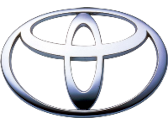Which brand are you looking for?

Lynk & Co
Lynk & Co
Available parts: 3

Abarth
Abarth
Available parts: 2

Chrysler
Chrysler
Available parts: 3

Daewoo
Daewoo
Available parts: 1

Dodge
Dodge
Available parts: 3

DS
DS
Available parts: 4

Ferrari
Ferrari
Available parts: 2

Ford Usa
Ford Usa
Available parts: 6

Isuzu
Isuzu
Available parts: 5

Iveco
Iveco
Available parts: 7

MAN
MAN
Available parts: 1

Maserati
Maserati
Available parts: 4

Rover
Rover
Available parts: 1

Smart
Smart
Available parts: 5

Ssangyong
Ssangyong
Available parts: 2
Catalytic Converter
If you own a car, then you most probably have a catalytic converter fitted. The catalytic converter is a device designed to reduce the amount of harmful substances from the car’s exhaust. A catalytic converter contains a chemical catalytic substance containing, among others; platinum, palladium and rhodium. This decomposes the various harmful substances such as NO (Nitric Oxide), which can otherwise take a very long time to decompose.
Should catalyst failure occur, you will find that your catalyst lamp is on, which means it is time for a service check.
Be aware of your car’s catalytic converter
A catalytic converter is designed so that it can last the entire lifetime of the car, so hopefully it is not something that you will have to be bothered with. It is not subject to as much wear and tear as other parts of the car’s exhaust.
The catalytic converter may in some cases be soaked or contaminated by oil, which requires purification. Soot typically occurs when the engine has sooted more than usual, which most often occurs when nozzles are defective. Oil pollution of the catalytic converter occurs when phosphorus from the oil and sulfur in diesel decreases the catalyst’s ability to function optimally.
When it comes to purifying the catalytic converter, this can be done using a multi-phase chemical treatment. However, it should be said that cleaning the catalytic converter is very tiresome and should always be left to a professional.
Replacing the catalytic converter on your car
If your catalytic converter cannot be cleaned, then it is of course necessary to replace it. However, this can be quite expensive as a catalytic converter costs a lot of money. In addition to that, comes the bill for having it replaced.
Therefore, you may save a lot of money, if you can replace the catalytic converter yourself. It takes a couple of hours and if you want to make it easier, it is recommended that you get someone to assist you.
Purchase of a used catalytic converter
As already mentioned, a catalytic converter is quite expensive and therefore you may save some money if you can find a used one that fits your car. It’s up to you, whether you want used parts in your car, but it can be a very good investment.
Autoparts24 has a large selection of different catalytic converters in stock, so there is a good chance that we also have a cheap catalytic converter for sale for exactly your car. Use the search function to see what we have. In addition, you can find various good advice on buying a used catalytic converter.
Legislation in the field
A catalytic converter is a statutory piece of equipment on cars and since 1990 all new cars on the Danish market have been equipped with a catalytic converter. In addition to NO (nitric oxide), a catalytic converter must also reduce the amount of CO (Carbon monoxide) and CH (Hydrocarbons).
The euro standards cover several EU directives dealing with the air pollution of cars and all registered cars in Denmark must comply with these. There are a few exceptions for vintage cars and their like. These Euro norms effectively set limits on how much a car may release, but formally a catalytic converter is not a requirement. However, in order to comply with these standards, a catalytic converter would be necessary.
Catalyst FAQ
Below you will find answers to some of the most frequently asked questions regarding catalytic converters.
What is a Catalytic converter?
A catalytic converter is a device that most people take for granted in modern cars. It’s function is to reduce the amount of harmful substances from the car’s exhaust. This applies to nitric oxide, carbon monoxide and hydrocarbons.
How does a catalytic converter work?
A catalytic converter works by means of a chemical catalytic converter consisting of platinum, palladium and rhodium decomposing the substances present in the exhaust, thereby significantly reducing their harmful effect.
What does catalytic converter mean?
Catalytic converter means a reaction or so-called catalysis, which is a substance that increases the speed of a chemical reaction without being consumed itself.
What does a catalyst do?
The car’s catalytic converter oxidizes hydrocarbons and carbon monoxide into carbon dioxide and water. Nitrogen oxides are reduced into nitrogen. This is done by the so-called three-way catalytic converter containing a unit consisting of magnesium-aluminum silicate, platinum and rhodium.
Where is the catalytic converter placed?
The catalytic converter is part of the exhaust system of the car and is located under the car, near the particle filter.
How does a catalytic converter work?
A catalyst plays an extremely important role as it converts harmful gases from the exhaust of the car into less harmful gases.
What does a catalytic converter look like?
The catalytic converter is typically designed as an oval cylinder. It is connected to the car exhaust and has a diameter much larger than the rest of the exhaust.
When should a catalytic converter be changed?
When the catalytic converter on a car can no longer meet the legal requirements, it is time for a replacement. This can be measured by your mechanic. It will usually be due to soot or oil pollution.
How hot does a catalytic converter get?
The catalytic converter must reach an internal temperature of 750 degrees Celsius in order to avoid incomplete combustion. However, much higher catalytic temperatures can be experienced depending on the car model and the condition of the catalytic converter.
What is a catalytic converter in a car?
The catalytic converter in a car is the particular unit that ensures the filtering and reduction of the amount of toxic exhaust gases.
What is Nitrogen Oxide?
Nitrogen oxides (NO) are toxic gases emitted from nitrogen and oxygen combustion under high pressure and high temperatures. This happens, among other things. when using an internal combustion engine like the one used in cars.
What happens when the catalytic converter is defective?
A defective catalytic converter can no longer release the toxic substances from the exhaust in an optimal way. This means that the car emits far more dangerous substance than allowed. At worst, it can be fatal, as carbon monoxide poisoning is among the most common forms of poisoning. Consequently, a well-functioning catalytic converter is vital.
How much does a catalyst cost?
The price of a catalytic converter depends on several factors. The car’s production year, model and not least whether you buy new or used converter. A new catalytic converter may cost anywhere from around a 150 Euros and up. However, expect the minimum of 500 Euros. Buying a refurbished catalytic converter can save you a lot of money. You can also buy a catalytic converter universal model, but of course it is more appropriate to use one made for your particular car.
How do I find the right catalytic converter for my car?
To find the right catalytic converter for your car, simply search by model number and year. This can be done easily on the Autoparts24 homepage, where we are most likely to have a catalytic converter suitable for your particular car.
Spare parts for sale of type by car brands
Our more than 120 car chippers now have more than 3063 pieces of the type for sale on Autoparts24 and here you can see how the used car parts are distributed for each car brand. E.g. you can see that there are 684 pcs. for sale right now of the VW brand, which is equivalent to 22 % of all used spare parts in the category.
Sold spare parts of the type by car makes
Based on our insight into more than 120 car chippers warehouses, we can see how the sales of spare parts of the type of rearview mirror are distributed among the car brands. E.g. you see that 0 pieces have been sold of the 4966 , which corresponds to 0 % of all used spare parts sold in the category 19
Prices on spare parts of the type
Here you can see how our car chipper sets the price of a spare part with the OEM number . So you have the opportunity to get an impression of the price of a spare part with OEM number , and thus become wiser about which car parts are cheap and expensive respectively. The average price of a spare part with OEM for sale on Autoparts24 is 2851 EUR.
Prices of sold spare parts of the type
Here you can see the price of the spare parts of the type that our car breakers sell. I.e. you can estimate whether most parts are being sold at the cheap end or the expensive end of the scale. Compared to the graph above, showing the offer price of the spare parts, you can evaluate the relationship between supply and demand for the auto spare parts of the type sbr />
The average price of a spare part of the type from one of our car chippers on Autoparts24 is 1761 EUR
































